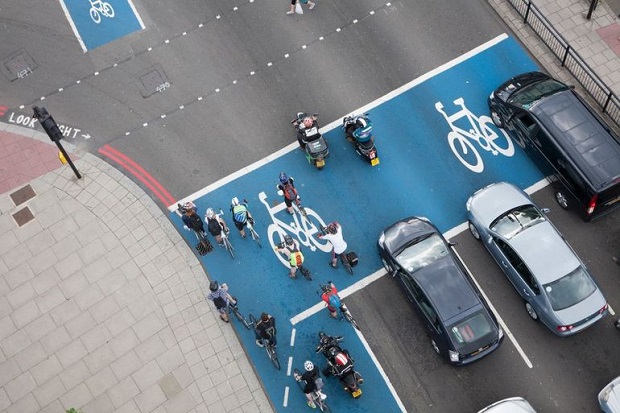by Stu Robarts, GizMag
In what it calls a “world first,” Transport for London will test a cyclist detection systems at traffic lights in the city with a view to improving cycle-flow. The technology aims to detect the number of cyclists travelling along a route. It then adjusts traffic signal timings to give cyclists more time on green lights.
Earlier this year, it was announced that two new Cycling Superhighways were to be opened in London. As with the superhighways, the new cyclist detection trials are aimed at improving cyclist safety in London.
The detection technology is able to reflect how busy a route is on a second-by-second basis and will build upon the Pedestrian Split Cycle Offset Optimisation Technique (SCOOT) trials. This technology gives pedestrians more time to cross the road when large numbers are detected.
There are two types of cyclist detection technology being trialed, one radar-based and the other thermal-based, the latter registering the heat of riders as they enter the detection zone. The trials, which will take place on London’s Cycle Superhighway network, will seek to determine the effectiveness of each approach with a view to potentially introducing them across London.
If successfully trialed, the technologies would be integrated into London’s existing SCOOT adaptive traffic control system that uses sensors buried in carriageways to manage vehicular traffic flows. Transport for London says SCOOT is in use at more than half of all junctions in London and has been shown to reduce delays by up to 12 per cent. It’s expected to be installed at three-quarters of junctions by 2018.
Source: Transport for London


